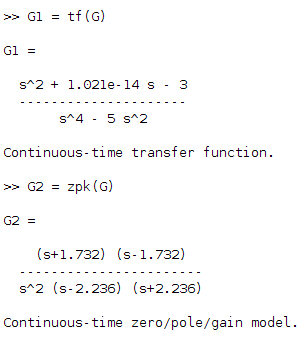Q1. Write a short note on Self Regulating processes.
I found this wonderful source.
When dealing with a process, its dynamic characteristics are usually of interest to us control engineers.
If the system gives a unbounded output for a step input, then this means the system is integrating. Thus when the manipulated variable is stepped up, the process variable continues to rise without reaching any steady state.
Otherwise the system (i.e. the process) is called a self regulatory process. This is because even without any additional controller in place the process still reaches a steady state.
Q2. How do you design a Dead Time Compensator?
Dead time is the delay from when a controller output signal is issued until when the measured process variable first begins to respond.
The controller must wait until the dead time has passed before it gets any feedback from the process.
And usually this delay is more than twice the time constant (for many chemical processes)
Okay so how do you FIX this problem?
P controller
When we deal with controlling a plant in closed loop (with feedback from plant output), we can try with a P-Only controller.
Will insert a UML diagram here once I get around to trying that ikkk out
So we have a single parameter of interest - which defines how aggressively the controller manipulates the MV (Whatever you use to change the state of the system). The input to this controller would be the error ( difference between Setpoint - desired output and Plant output), which would be amplified by the factor.
Note that this method has a great shortcoming - called offset. This can be understood by the fact that as the plant output reaches the setpoint the controller proportionally stops trying to influence the system. Thus the system never actually gets to reach the setpoint at steady state!
PI Controller
To eliminate this weakness of the P only controller we add a new term to the controller. A term that sums up all the errors up (integrate) until then (scaled with a constant) and uses this to decide how much the MV should be influenced.
Controller Output =
Here is a constant, used to ensure that CO (Controller output) never has to suddenly change (Bumpless Transfer).
Now the Proportional controller’s term does the same thing as it did in the P only controller. Here the integral saves us from offset because as the Plant output approaches the setpoint, the plant output will oscillate about the setpoint value. Note that negative errors will also accumulate along with positive errors, Thus as time goes the area under each successive oscillation will be less and less. This is why using a PI controller we are assured of reaching our Setpoint during steady state.
Ok now that we understand PI controller to a good degree let’s get back to the problem at hand.
I used this mathworks page and this page to get a idea. But on whole - We prefer to use PI controllers in the industry because
- When we use Model predictive control techniques like Smith predictor over PI controller, we sacrifice Robustness. What this means is that this control system we design will lack the ability to adapt well to uncertain changes.
- The performance of the PI controller is severely limited by the long dead time. This is because the PI controller has no knowledge of the dead time and reacts too “impatiently” when the actual output y does not match the desired setpoint ysp.
Smith Predictor
Written with StackEdit.

















